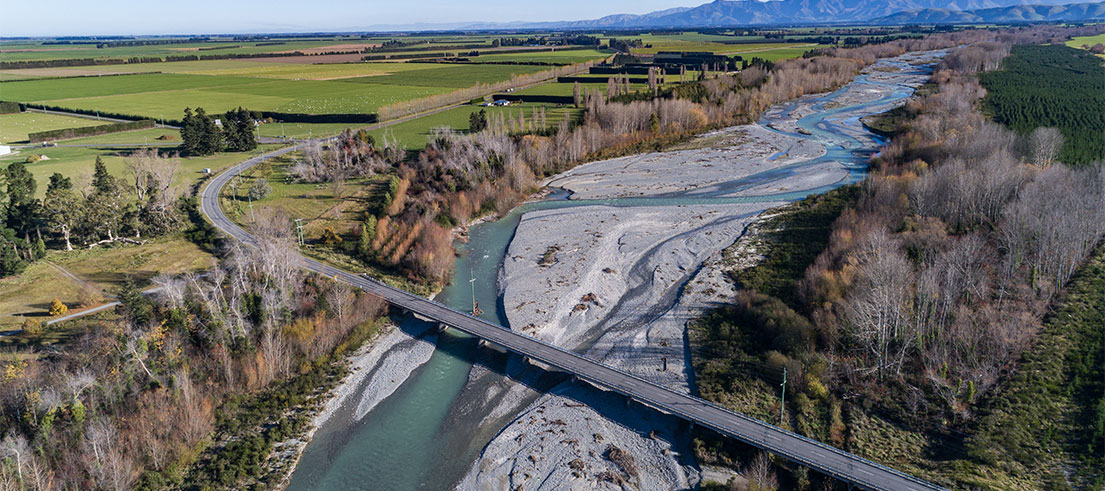
Reviews on track to keep more water in the Hakatere/Ashburton River
Record rainfall over the last month has left our river flows in a constant rise and fall, however the lack of water in the Hakatere/Ashburton River has been a concern of river users for many years and is still being addressed.
From 1 July 2023, new minimum flow limits are set to keep more water in the river and protect the natural character and mauri of the river. It’s all part of new rules required by the Canterbury Land and Water Regional Plan (LWRP). Environment Canterbury is working closely with consent holders within the catchment to implement the new rules through resource consent reviews and is assisting affected landowners to explore their water supply options and reduce the water they take at times of lower river flows.
At the end of July 2022, 71 of 88 consent reviews had been resolved. Of these, 62 now have the minimum flow applied.
There are 17 reviews remaining, held by eight consent holders. Three reviews were publicly notified in July, with hearings likely to be later in the year.
On track for implementation
Environment Canterbury regional planning manager Andrew Parrish said that consent holder wellbeing has been paramount in the review process.
"The last two years have been tough on some members of the community, with factors such as flooding, COVID-19, and Mycoplasma bovis to consider.
"We’ve been able to provide landowners with time to work through the implications of the 2023 minimum flows for their farms and secure alternative water supplies where needed and available."
Parrish said the consent holders have investigated options to reduce the effects of the new minimum flow requirements.
"Many have swapped from surface water or connected groundwater to deeper, unconnected bores. Other consent holders have investigated on-farm or shared water storage or connected to an irrigation scheme.
"The remaining consent holders are either close to a solution or in the process of swapping from direct surface water or hydraulically connected groundwater takes to deep groundwater takes."
Benefits of more water in the system
The minimum flows were developed through the LWRP process under the Resource Management Act, which included submissions from the community. From 1 July 2023, affected consent holders must stop taking water when the flow in the Hakatere/Ashburton River mainstem at the State Highway 1 Bridge recorder site is less than six cumecs (6000 litres per second). There are also minimum flow restrictions on tributary waterways.
Parrish said the actual benefits of the consent review will not likely be seen until the irrigation season is underway at the end of 2023. Some of the desired outcomes will take longer, as the groundwater and surface water hydrology, and associated ecosystems, will take time to reach a new equilibrium.
"The changes to consents contribute to a wider environmental benefit for all water users and help to ensure that an open river mouth will be maintained," Parrish said.
"More water will be left in the river system, leading to increased surface flow and/or higher connected groundwater water levels compared to the current state. Our modelling shows the river will spend more time above 6 m³/s, especially in years with drier summers.
"We expect the changes will improve conditions for fish migration and water quality, especially at the hāpua and river mouth."
